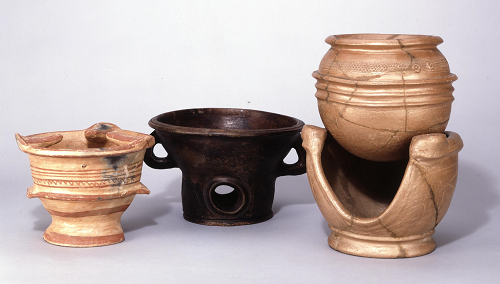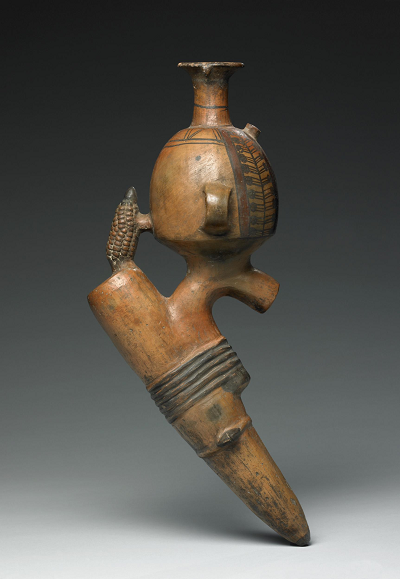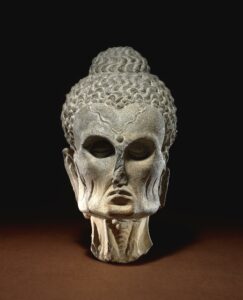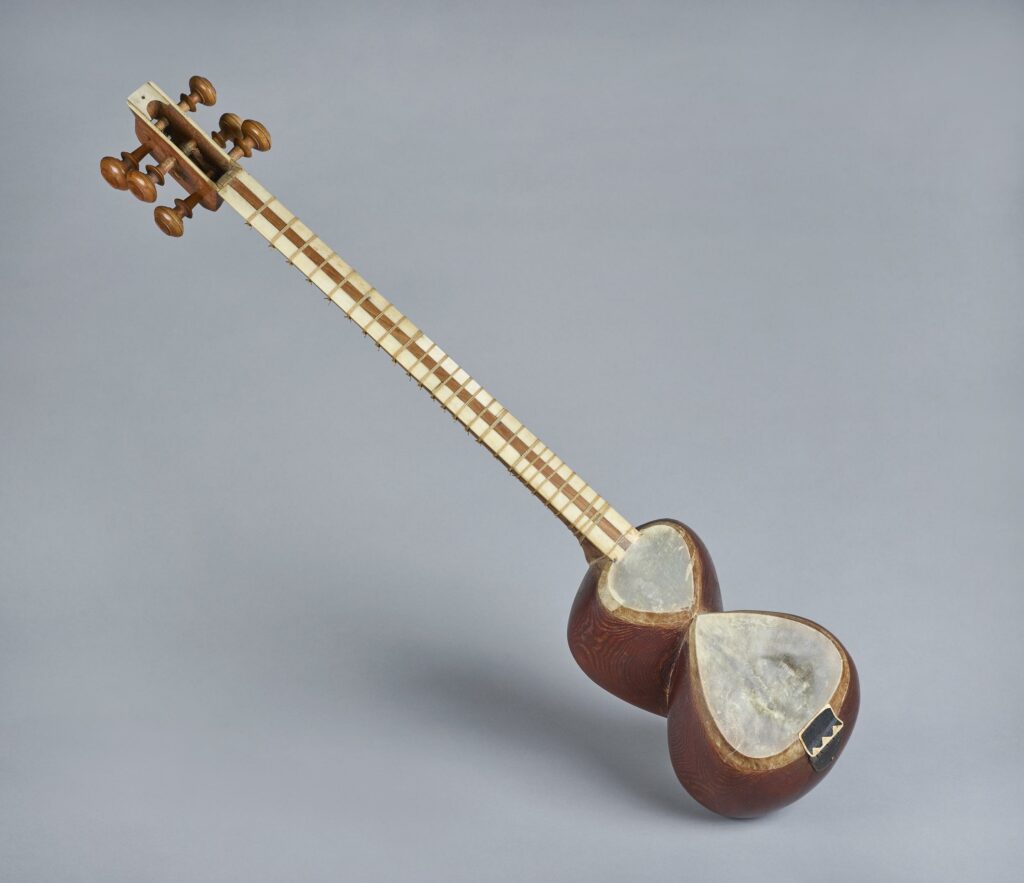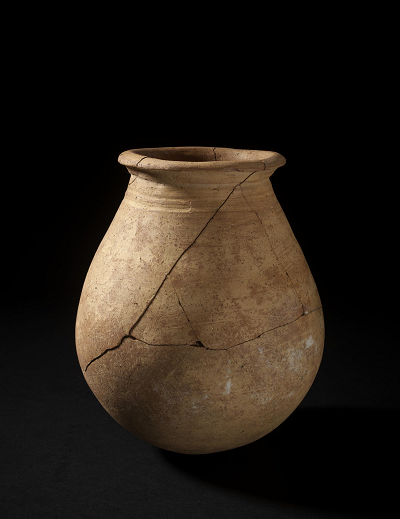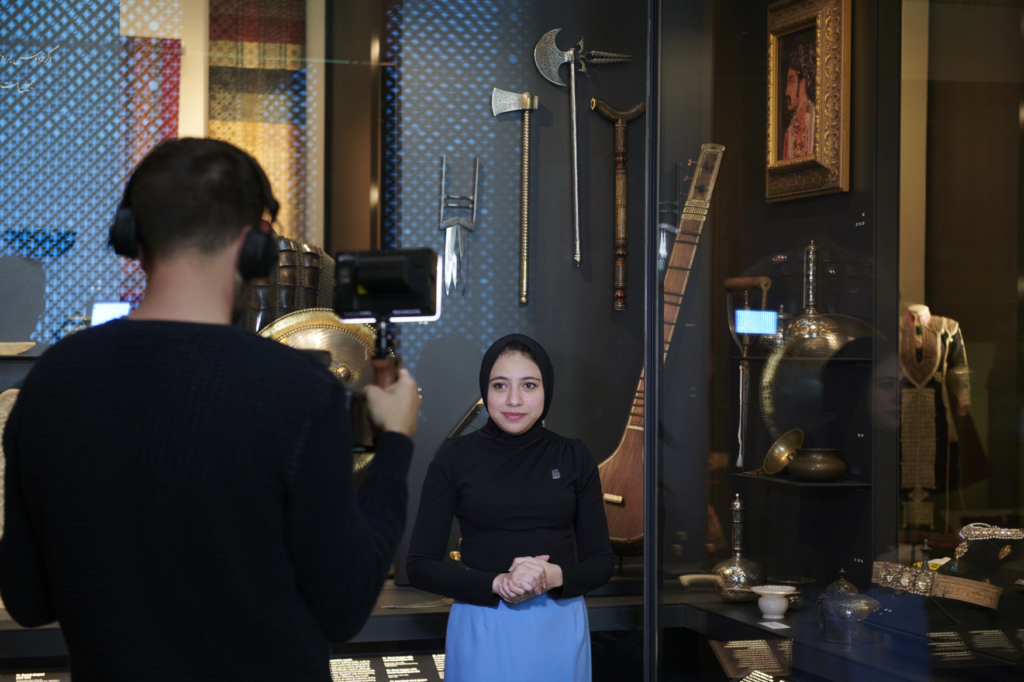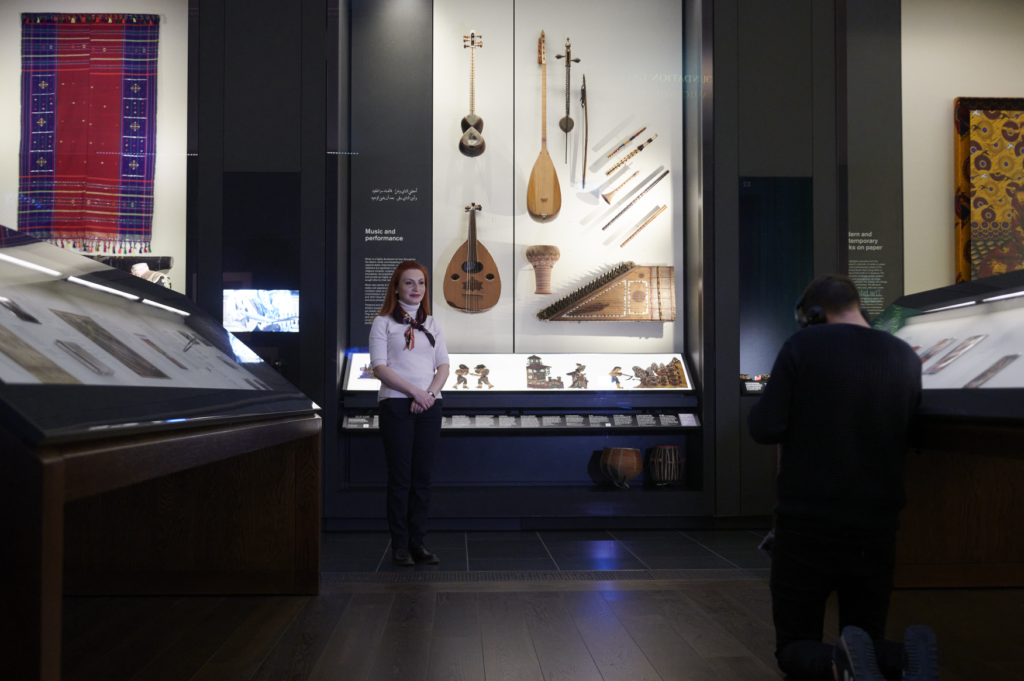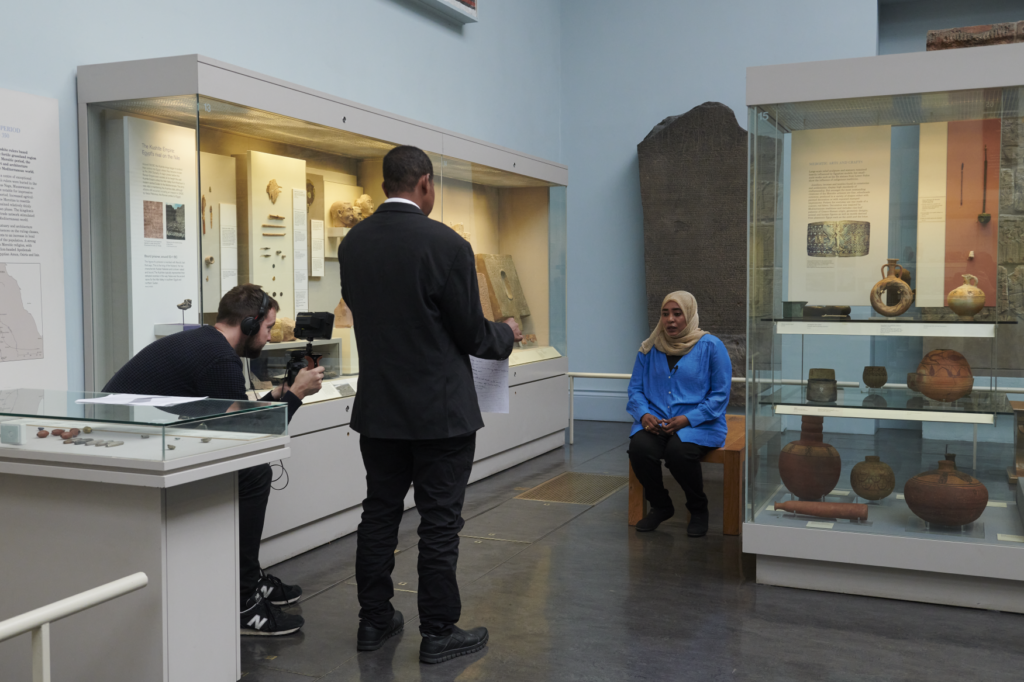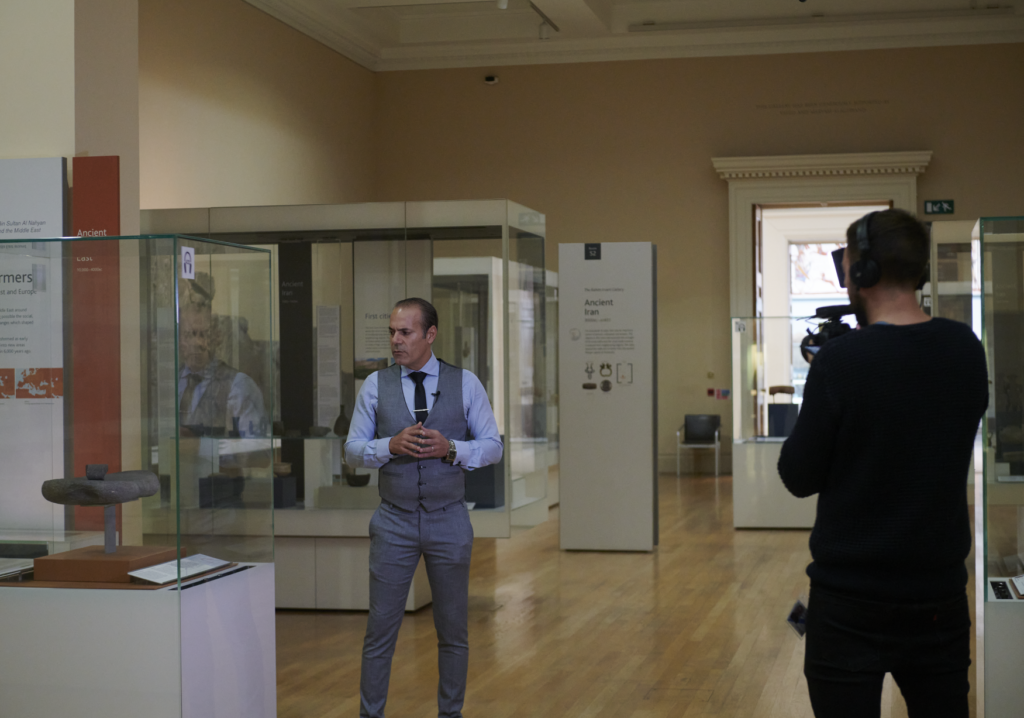Each year, as part of the Annual Programme, fellows are asked to participate in the Object in focus project. This project has taken different forms over the years. It began with fellows making proposals for a one-object exhibition that could be displayed in Room 3 of the British Museum. At the end of the project, fellows would give a presentation on their Room 3 proposal to ITP and British Museum colleagues.
This evolved into the Object in focus project. Fellows are asked to plan and propose a temporary exhibition, drawing on their existing museum experience and the skills learnt during the programme. Working in pairs or in groups, fellows are given an object from the Museum’s collection to propose a temporary exhibition working within a particular theme. The projects are presented at an evening reception towards the end of the programme.
For 2022, the Object in focus project took a new form. The 2022 ITP cohort were asked to work together to create an museum trail using objects on display at the Museum.
Working individually but considering how their object sat within the ITP 2022 cohort’s chosen theme, the group developed a 15-object trail based on a story they wanted to share based around the British Museum collection. The theme of the trail was Food and drink around the world.
The fellows created a trail leaflet for visitors, and a film was made to capture their creativity and collaboration.
1. Ladle from Java, Indonesia
Composite ladle in the form of a shallow shell bowl and a horn handle. This small ladle represents a utensil that can be found in homes across Indonesia.
Object selected by Kezia Permata Student, Indonesia.

Ladle in the form of a shallow shell bowl and a horn handle. Found in Java, Indonesia.
2. Cooking ware from Nigeria
Pottery bowls with raised circumferential ridges. The coal pot is filled with charcoal and lit with a flame. Clay pots are placed on the central ridges of the coal pot.
Object selected by Beatrice Bamigbade, Principal Conservator, Museum of Unity, Nigeria.
3. Paccha from Peru
Fertility vessel in the form of a foot plough (chaquitaqlla). The shape and design narrates the Andean agricultural cycle of maize growth.
Object selected by Yanoa Pomalima Carrasco, Museologist, Ministry of Culture Peru, National Museum (MUNA), Peru
4. Shrunken head sculpture from Gandhara
This sculpture represents Siddhartha (who is yet to become Buddha) when he underwent extreme fasting while doing meditation to discover the truth of life.
Object selected by Priyanka Kundu, Museum Keeper, Lalbhai Dalpatbhai Museum, India
5. Porcelain wine cups from China
Set of twelve porcelain wine cups, each
decorated with a seasonal plant or flower
representing a month on the lunar calendar.
Object selected by Shahira Banu (Student, Singapore).
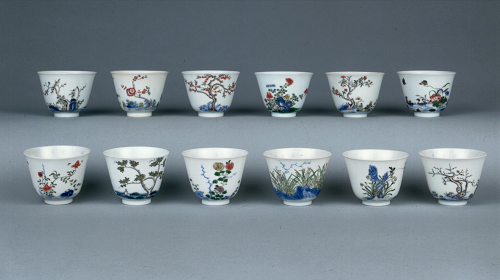
Set of twelve porcelain wine-cups. There is a different seasonal tree, shrub or flower, to represent one of the twelve months on the exterior of each cup.
6. Instrument from Iran
Stringed musical instrument called a tar or long-necked Iranian lute. This instrument was used Middle East countries’ cafes.
Object selected by Tatevik Saroyan, Head of PR Department, Matenadaran Research Institute of Ancient Manuscripts named after Mesrop Mashtots, Armenia
7. Bowl from India
Magic bowls with Islamic verses of the Quran with the 99 names of God engraved on their inner surface. When filled, the vessel transfers curative aspects to the liquid.
Object selected by Dana Khalil, Museum Curator, United Arab Emirates.

Brass bowl from India engraved with Arabic inscriptions and with engraved brass tags attached.
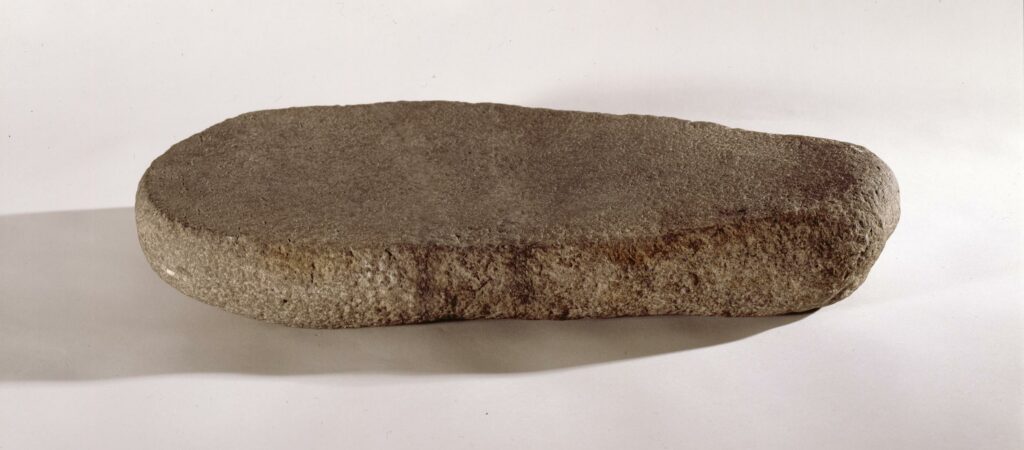
Grinding stone tool from Syria.
8. Grinding stone from Syria.
Grinding-stone tools aim to reduce materials into particles or powder. Analysing residue from these stones provides insight into the relationships between people and plants.
Object selected by Lotfi Belhouchette, Director, Museographic Development, The Institute of Heritage, Tunisia.
9. Tomb painting from Egypt
This polychrome tomb painting represents Nebamun, his wife and daughter, while he is standing in a boat catching fowl and fish.
Object selected Omnia Zaghlol Chehata, Supervisor, Educational Department and Administration, Akhenaten Museum, Egypt.

Fragment of a tomb-painting representing Nebamun, standing in a small boat, fowling and fishing in the marshes.

Remains of a pomegranate which was given as a funerary offering in ancient Egypt.
10. Pomegranate offering from Egypt
Food offerings such as pomegranates in a bowl were common in a funerary context in Egypt. They were essential for the magical evocation of food supplies needed for the afterlife.
Object selected by Eneida de Lemos, Museum Projects Consultant, Brazil.
11. Flint sickle blade from Egypt
To cut the grain stalks, ancient Egyptians used flint blades like this fitted into wooden handles.
Object selected by Mohammad Al Qaisi, Education Manager, The Jordan Museum, Jordan.

Flint sickle blade, pointed at both ends with one serrated edge.
12. Conical jar from Egypt.
Nile silt cooking pot found in Naqada. Similar pots were placed in graves to magically provide a home-cooked meal for
the dead in the afterlife.
Object selected by Alaa Menshawy, Director, Luxor Museum, Egypt.
13. Jar from Sudan
Wheel-made jar from the Meroitic period with a long narrow neck and thick red polish used to contain drinks.
Object selected by Asmahan Humada Gabir Mohmmedin, Curator, Sudan National Museum, Sudan
14. Bottle from Sudan
In Kerma culture, it is typical to place in
burials sacrificed young sheep, goats, and similar wheel-made bottles to contain drinks.
Object selected by Alatieb Abdelslam Abdalla Ali, Curator, Sudan National Museum, Sudan.
15. Sculpture from London
This porcelain fish and chips sculpture by
Japanese artist Hosono Hitomi reflects how food such as potatoes crossed territorial boundaries worldwide.
Object selected by Nilanjana Som, Assistant Curator, Chhatrapati Shivaji Maharaj Vastu Sangrahalaya (CSMVS), India
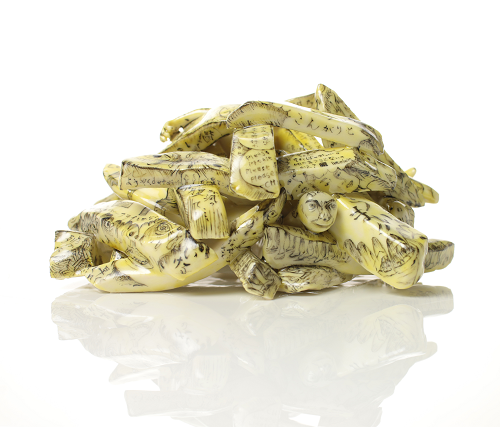
Sculpture by Hosono Hitomi, in the form of a portion of chips. Made of porcelain with underglaze and overglaze decoration.

